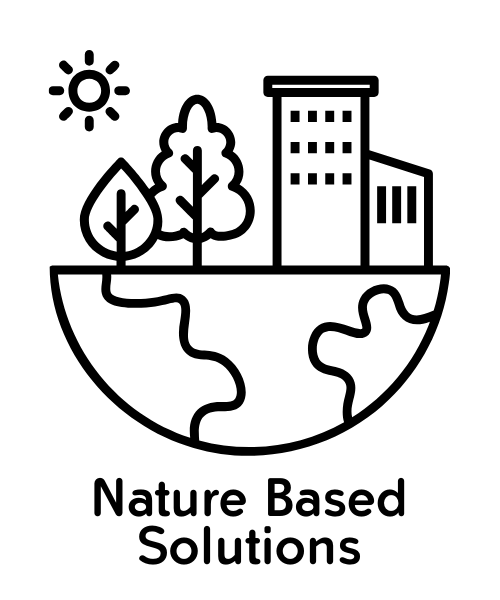
PROJECTS
Working in Watersheds






The Economic Flooding Study
Since the beginnings of industrialized Pittsburgh in the 19th century the Saw Mill Run stream valley has been plagued by severe and dangerous flash flooding. Furthermore, over the last 100 years, increased development within the floodplains has constricted the stream while urbanization in the upper watershed has increased the percentage of impermeable surface.
Funded by the Hillman Foundation, the Economic Flooding Study developed a rationale for change along Saw Mill Run, particularly as it relates to floodplain management land use practices, and the importance of reversing over 100 years of disinvestment by creating a healthy and economically vibrant stream corridor.
Saw Mill Run Valley
Master Site Development Plan
Frederick Law Olmsted Jr. once envisioned Saw Mill Run as a Green Boulevard, or a linear park and public open space along the stream through this area south of the City. Since this vision, intense development in the Corridor has resulted in flooding and degradation of Saw Mill Run.
The Master Site Development Plan provides practical and sustainable recommendations for a more holistic and environmentally informed approach to managing the Corridor.
Saw Mill Run
Integrated Watershed Management Plan
In 2015, the Saw Mill Run Watershed Association (now known as Watersheds of South Pittsburgh) in partnership with the Pittsburgh Water and Sewer Authority, launched the development of the Saw Mill Run Integrated Watershed Management Plan. This ambitious project involved over 3 years of collaborative work amongthe 11 municipalities in the watershed, PWSA, ALCOSAN and the Pennsylvania Department of Environmental Protection.
The Three Rivers Urban Watersheds Council
Watersheds of South Pittsburgh, along with 5 regional water resource NGOs — Three Rivers Waterkeeper, Upstream Pittsburgh, The Monwater Project, The Pittsburgh Parks Conservancy, and the Pittsburgh Water Collaboratory — have engaged in early strategic conversations focused on developing transformative change around water quality and water quantity in our region.
Previous Projects
-
The Saw Mill Run Watershed FloodPlain Management Strategy: Completed in 2016
The US Army Corps of Engineers has been investigating flood risk management solutions for the Saw Mill Run Watershed for nearly 70 years. The focus of this document was to outline non-structural strategies to decrease total volume and velocities of stormwater runoff into Saw Mill Run, decreasing peak flows. Non-structural and Green Infrastructure techniques offer the greatest opportunity to reduce the frequency and severity of flooding within the watershed.
This recommendation section has been divided into four alternatives. These alternatives are not mutually exclusive, but ordered from highest to lowest anticipated impact. Cost, complexity, and potential benefits were all considered.
Alternative 1: Partnership with Government and Transportation Interest
Because these parcels support critical transportation infrastructure this alternative would not require land acquisition, and instead rely on a partnership between the land owner and the implementing partner.
The public owners have a direct stake in reducing the frequency and severity of flooding. The implementing partner would use public land to install and maintain the stormwater management features.
Alternative 2: Large Private Landowners and Unused Impervious Surfaces
The second alternative involves a mix of public/private partnership and property acquisition.
Throughout the PA-51 and PA-88 corridors there are large areas of abandoned or underutilized commercial properties with large paved areas.
Targeting those parcels with high impervious coverage and little to no active use would offer lower cost acquisition options that could significantly improve retention.
The location of parcels adjacent to the stream would also significantly reduce stormwater velocities prior to reaching Saw Mill Run.
Alternative 3: Headwater Flow Reductions
Neighborhoods upstream of the main stem of Saw Mill Run have developed stormwater management systems that quickly remove runoff into the downstream portions of the basin during heavy precipitation events.
These flows from upstream communities, combined with runoff flowing directly into the main stem, combine to produce significant impacts at certain points in the watershed, including the PA-51 and PA-88 Junction.
The most effective stormwater management programs require a watershed approach, in this case possible modifications to stormwater management practices in the upstream reaches of the watershed.
Alternative 4: Buyout and Relocation of Commercial and Residential Properties
This alternative is the least desirable of those considered due to the cost, average parcel size, and complexity of acquisition.
-
The Saw Mill Run Green Boulevard Property Acquisition Study:
Completed in 2016
A decision making matrix to identify priority parcels for inclusion in the Route 51 Green Boulevard. This study completed some of the foundational elements which will enable the transformation of the Route 51 corridor into an amenity which provides a variety of triple bottom line benefits
The long-term vision for the Green Boulevard is to enhance the economic, environmental, and social health of the corridor.
The Route 51 corridor and the Saw Mill Run watershed currently face several challenges such as blighted properties, localized flooding, and impaired water quality.
The goals of this project included:
Benchmark national best practices to inform goals and objectives,
Develop a decision-making matrix to identify parcels of land for inclusion in the GreenBoulevard planning effort.
Apply the matrix along the Route 51 and Library Road corridors, and Identify both near-term and long-term priority acquisition parcels.




